What Is a Hydro-Locked Engine & What Should I Do About It?
-
Pete Ortiz
- Last updated:
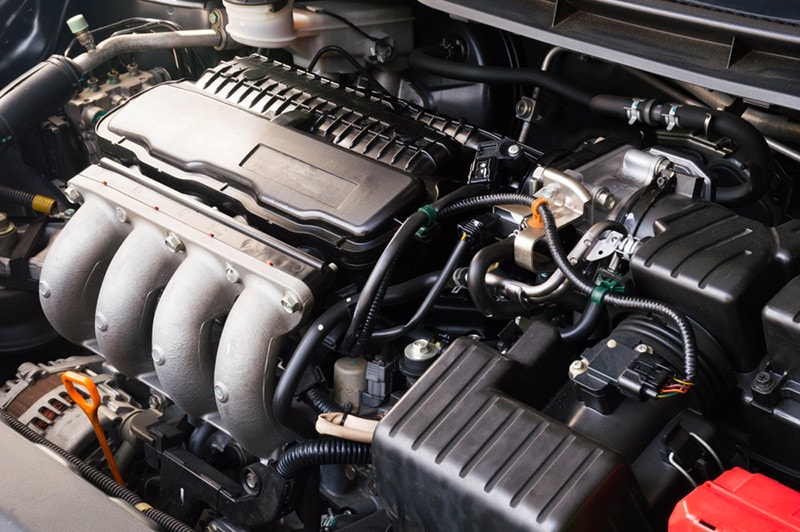
If we lived in a perfect world, all car engines would perform for an extended period without any significant issues. However, as with all mechanical devices, if you drive a car long enough, you are likely to encounter engine issues. As a car owner, one of the most worrisome issues you can face is a hydro-locked car engine.
Though rare, hydro-locking is an internal combustion engine issue that occurs when you don’t crank up your engine for a while or when you drive through deep water. In such situations, water enters the engine cylinders through the filter or air intake, seizing up the pistons and other internal components. Hydro-locking can damage the engine parts and even damage the engine beyond repair in extreme cases.
Despite being uncommon, it’s wise to know the different signs and symptoms of hydro-locking and why it happens. This information can save you a lot of money in repairs and helps prevent your engine from cataclysmic failure. Keep reading to learn more about hydro-locking in car engines and what to do if you find yourself in this rare situation.
What Is a Hydro-Locked Engine?
Also referred to as a hydrostatic lock, hydro-locking refers to water inside an engine. As we all know, engine pistols compress a mixture of fuel and air in the cylinder. The combustion chamber achieves ignition because the mixture is compressible. However, if water is sucked into the engine, it can break down because a fuel-water combination is incompressible.
When large amounts of water drip into the combustion chamber, the pistons will eventually stop moving and the engine will not be able to run. You can easily tell when your engine is hydro-locked because a cracking sound will emanate from the engine when the pistons stop moving.
Water is not the only culprit for hydro-locked engines. Other fluids such as oil and coolants can also hydro-lock your car engine because the cylinders are designed to work with an air and fuel mixture.
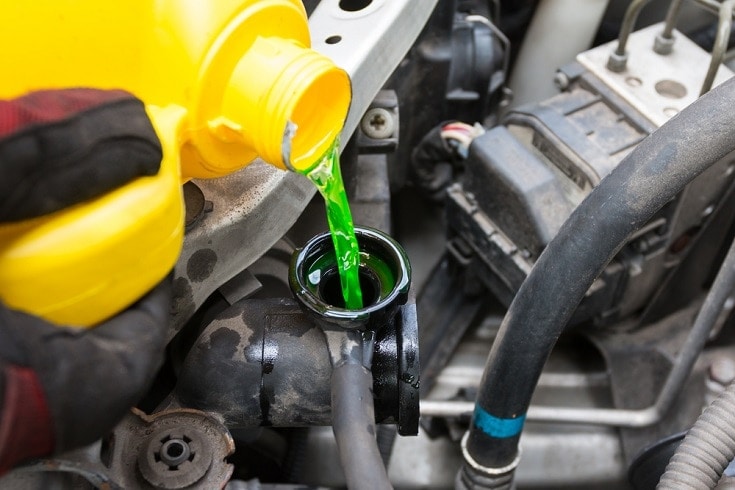
Hydro-locked engines may be dangerous, but they are not always fatal. The damage extent to your engine components will depend on factors such as the speed the car was driving when water dripped into the engine.
If your car has seized up from hydro-locking, you may want to call a mechanic to address the problem. However, the cost of repairing a broken-down engine is extensive and can eat away at your wallet. Therefore, as a car owner, you should always be attentive to your engine and its components to check for recognizable signs and symptoms of hydro-locking. But if your car is completely totaled, consider selling the car to a junkyard.
What Causes Hydro-locking in Engines?
1. Engine Modifications
If you live in a predominantly warm environment, you may want to add an aftermarket feature, such as a cold air intake, to make the interior of your car cooler. However, cold air intakes increase the chances of water dripping into the engine’s combustion chamber because of their vulnerable location in the car. This is because the feature is designed to let as much cold air flow into the air intake.
Unfortunately, cool air intakes are often not protected from outside elements. They can allow water collected in the engine bay to get sucked into the combustion chamber. Moreover, cold air intakes are usually installed in car wheel wells to minimize hot air from getting sucked into the engine bay. So, when you drive through a puddle or a flooded road, dirty water will pool in your wheel well and get sucked into the engine. This will eventually cause your engine to be hydro-locked.
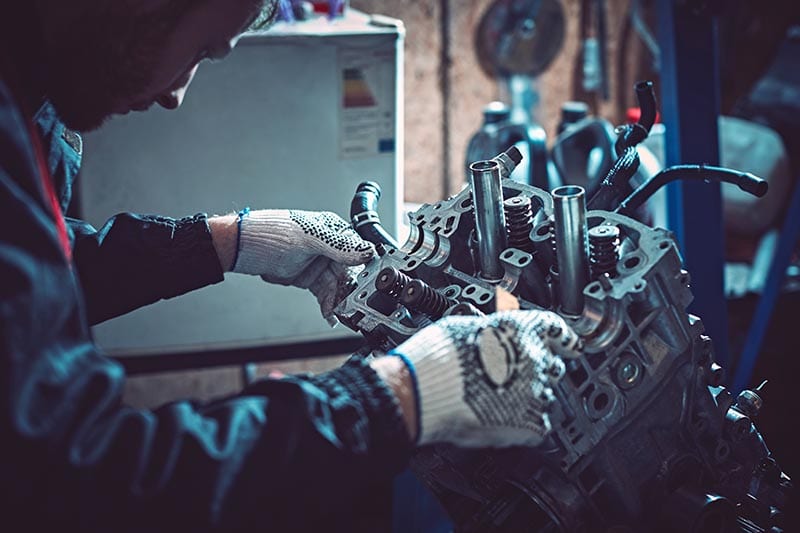
2. Driving Through High-Water Levels
Driving through a flooded road section will also increase the chances of your engine getting hydro-locked. If you drive through bumper-high water or water high enough to get over your hood, it will get sucked into your car engine through the air intake.
This is probably why drivers are cautioned not to drive through flooded road sections because one never really knows just how deep the water is. Even if another car has successfully navigated through the flooded road section, don’t follow suit. Your vehicle may not be as lucky because it probably sits lower on the ground or is more vulnerable to hydro-locking.

3. Leaking Gasket
Sometimes hydro-locking in engines is caused by a damaged head gasket that allows the coolant to leak into the engine cylinders. If this happens, your engine might seize up. Car engine coolant cannot be compressed by pistons. There may not be a correct method for confirming whether your gasket is leaking, but you can always diagnose this issue by checking to see if oil is present in the coolant. If oil is present, chances are high that your gasket is leaking, allowing engine oil to mix with the coolant.
If you suspect your gasket is leaking, you might want to replace it as soon as possible. Failure to, the coolant will continue leaking into your cylinder and the engine will seize. So instead of spending less repairing or replacing the faulty gasket, you may spend more replacing the entire car engine.
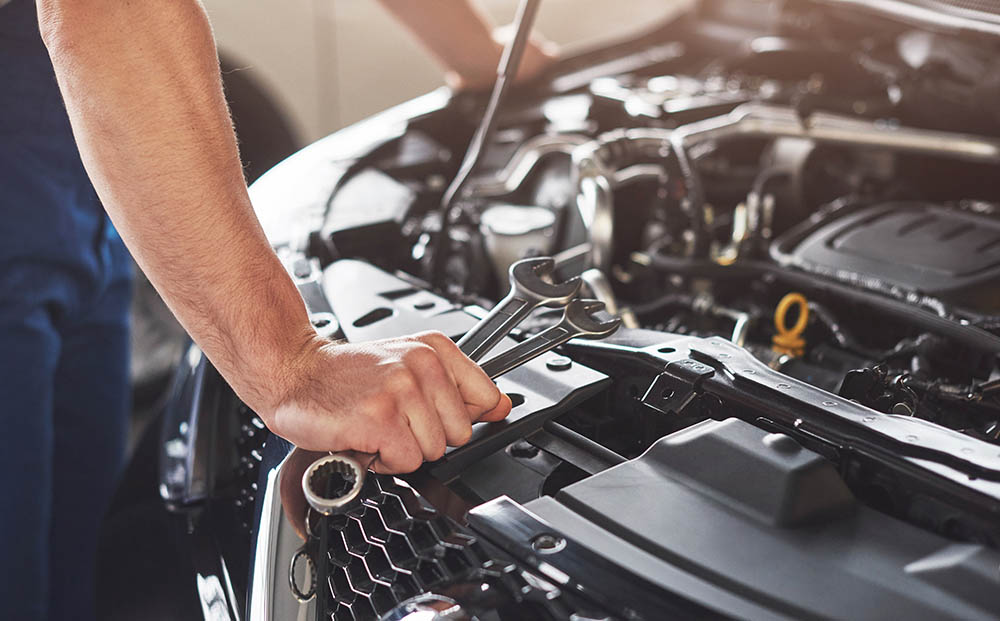
4. Damaged Fuel Injector
The fuel injector controls the amount of fuel released into the cylinders for combustion. If damaged or jammed, it will allow too much fuel to be released into the combustion chamber. Though a rare occurrence, if it happens you might be forced to drain the engine fuel from the cylinders, intake manifold, and the intercooler.
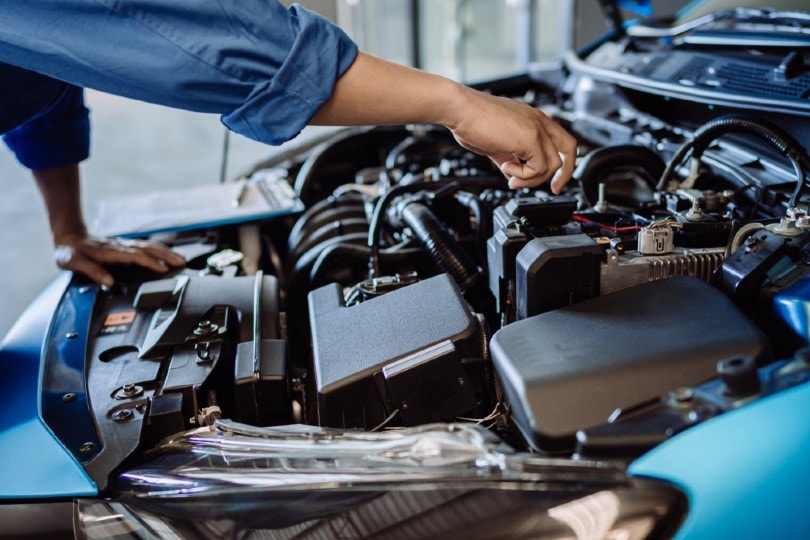
To What Extent Does an Engine Hydro-Lock?
When water gets into your engine, be prepared to deal with minimal to severe damage. As mentioned before, the extent of the damage will depend on the amount of liquid in the engine and the speed at which the car was driving.
If More Water Is in the Engine
More water in the car engine means the pistons will work harder to compress the fuel, air, and water mixture. This is because water will reduce the air intake into the combustion cylinders, thus damaging the internal engine components.
If the Engine Is at Low RPMs or Idle
Hydro-locking can even happen when the engine is not running. For instance, when you have packed a car in an area prone to flash floods, the floodwater could still slip into the engine cylinder.
If your car was idling or driving at a low speed, engine damage is not likely to be extensive. The only inconvenience would be your engine stalling. When this happens, you might want to ring your nearest local towing services to tow your car to the nearest auto repair shop.

If the Engine Is at High RPMs
If your car was driving at high speeds when hydro-locking occurred, you might experience catastrophic engine failure. This is very scary if you think about it because the pistons that compress the air and fuel mixture are connected to the crankshaft. Stopping the rotation of the crankshaft on its tracks will likely create cracks on the cylinder walls, causing it to blow the oil seals. Also, bends can occur on the connecting rod, and at top speed, the rod can even snap and break free.
When this happens, expect severe engine damage. Chances are high that the rod can cut through the engine block damaging different internal components and rendering your car nonfunctional. In such a scenario, draining water from the cylinders may not be helpful. Other engine problems you can expect include crank damage, broken piston rings, bent valves, and a breach in the cylinder head.
Common Hydro-locking Symptoms
You can determine if your engine is hydro-locked from several signs and symptoms. However, the symptoms will vary depending on the amount of water that has made its way into the engine cylinders.
- If Small Amounts of Water Are in the Cylinder: The engine will produce a rough sound. Mostly, water pooled in the car engine can be released through the exhaust pipe. Fortunately, your engine will continue running.
- If Large Amounts of Water Are in the Cylinder: The engine will produce a loud crashing or knocking sound. This will happen as water levels in the cylinder rise. The sound will only be present for a few seconds before the engine completely shuts off, and, as it does, you will hear a loud thud under your hood. Your engine will have seized up and will not turn over at this point.
- Sudden and Frequent Engine Stalling: If water drips into the car engine through the fuel and air intake systems, it affects the fuel/air ratio. This reduces the power produced by the engine.
- Failure to Turn Over Hydro-Locked: Engines are usually incapable of cranking or turning over. However, after repairing and drying, you can manually crank the engine.
- Water Present in the Oil: If your oil looks discolored or diluted, chances are high water is in your engine. To confirm if the engine is hydro-locked, simply use dipsticks to ascertain the presence of water in the oil.
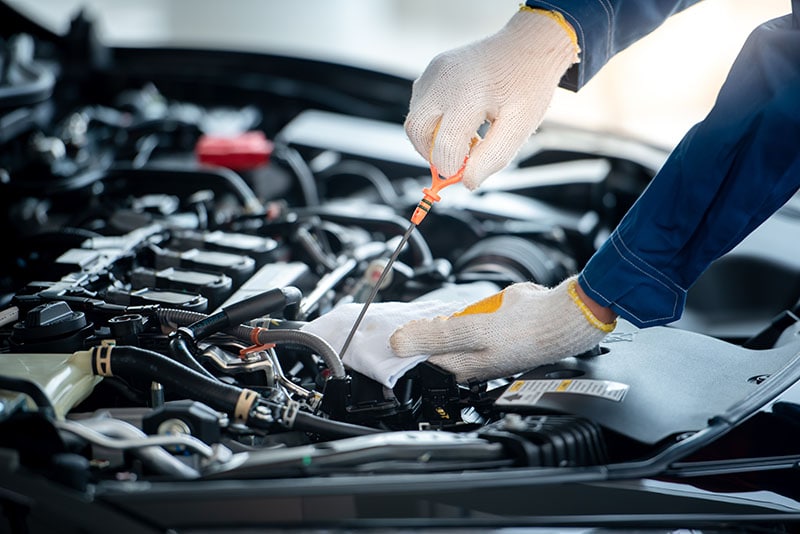
Is a Hydro-locked Engine Fixable?
If you have ascertained that your engine is hydro-locked, you may be wondering what to do next. While it doesn’t take much for a car engine to be hydro-locked, fixing a hydro-locked car engine is a herculean endeavor.
Fixing a hydro-locked engine will depend on the damage to the engine and other internal components. Once you have determined the level of damage, you can simply replace the internal damaged parts of the engine.
If There Is No Engine Damage:
If your engine is hydro-locked while driving at low speeds, you can get your car up and running by applying simple repairs. This involves draining water present in the cylinders. However, do not DIY fix this issue. It’s best to let auto mechanics fix the car issue because they have all the necessary tools. This usually entails removing the spark plug and, in some instances, the fuel injectors. This procedure allows water in the cylinders to drain out.
To further remove the water, crank the engine. You may notice gas spewing out of the exhaust pipe, but this is normal because of the fuel, air, and water mixture. After removing water from the engine cylinders, proceed to clean the cylinder walls. This will remove any moisture left on the surface that could lead to corrosion. Auto repair experts also recommend replacement of the spark plugs with newer editions and doing an oil change to help you get your car back on the road.
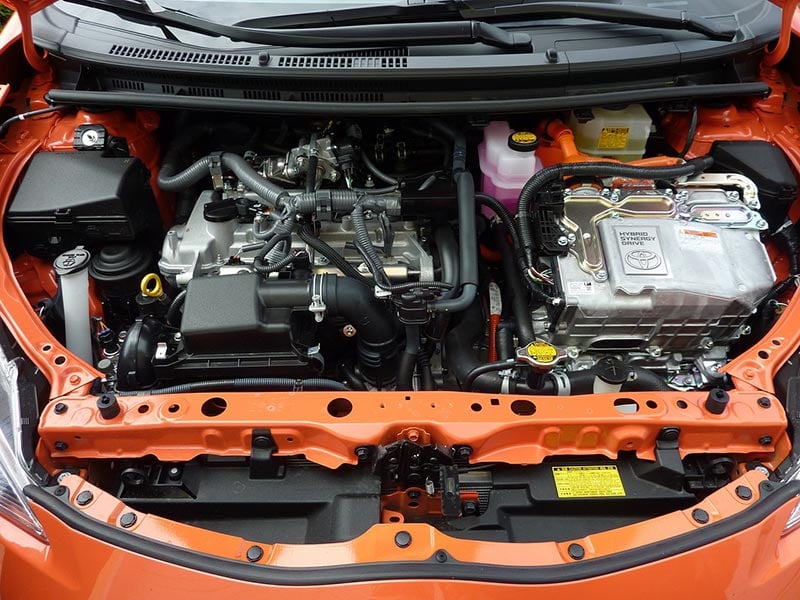
If Engine Damage Occurred:
If your engine became hydro-locked while driving at high speeds, then your car might have experienced extensive engine damage. Therefore, the best solution would be to tow the car to an auto repair shop immediately. Once the auto mechanics ascertain your engine is hydro-locked, they will strip it down and inspect every individual part for signs of damage. As aforementioned, they could find scored bearings, bent connection rods, or cracked pistons. The engine block could also be deformed.
If the damage is extensive, you could be looking at a costly engine rebuild. In most instances, it makes more financial sense to purchase a used engine and install it in your vehicle. It would be more cost-effective to replace the car engine instead of spending thousands of dollars fixing or rebuilding a totaled engine. You can purchase most second-hand engines for cheap from your local junkyard. You could also sell your hydro-locked car engine at a good price in the junkyard.
How to Prevent Hydro-locking in Engines
To prevent the inconveniences of a hydro-locked engine, simply ensure that no other fluids except the fuel/air mixture make their way into the engine cylinders. In addition, if your car features a cold air intake fixture attached to the air intake, consider having it removed. Instead, use the standard air intake to prevent water from being sucked into the cylinders.
Also, never drive on flooded sections of the road. This will not only prevent your car from being swept away by strong flood currents but also limit the amount of water that can get sucked into the intake valves and straight into the engine, especially if the levels are bumper high.
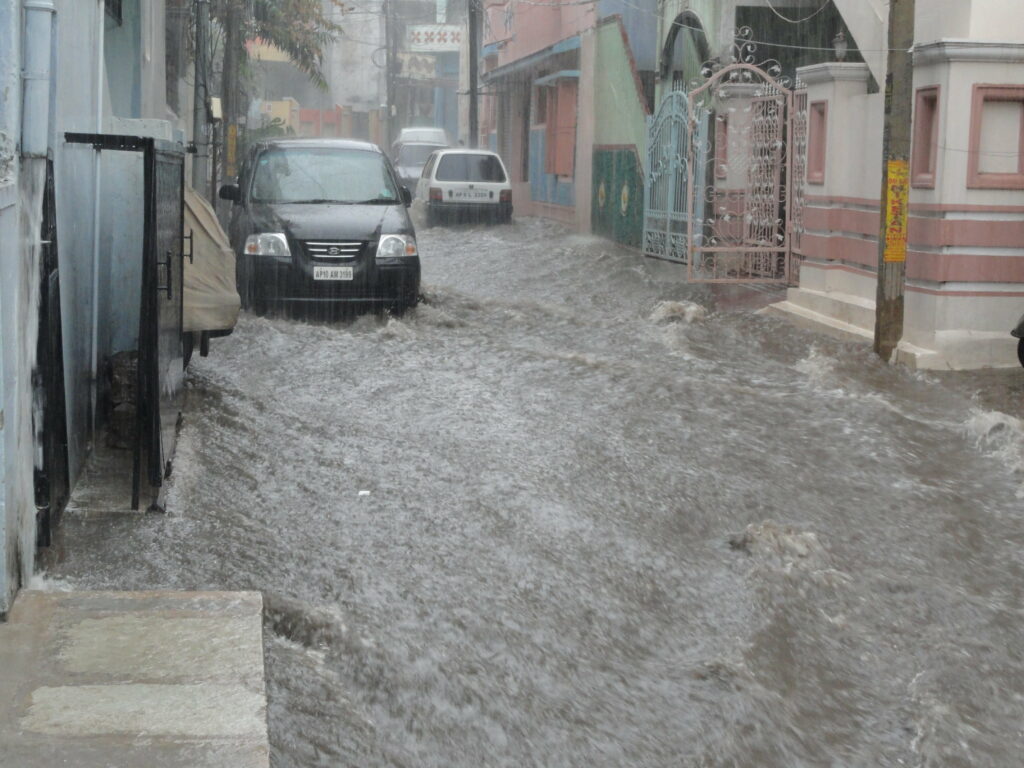
It is also wise to regularly check your engine for any possible cracks and leaks and fix them. If you notice a puddle of green liquid under your car whenever you park, chances are high that you might be dealing with a coolant leak which is a tell-tale sign of hydro-locking.
Therefore, you should immediately replace the engine head gasket because it is likely to be faulty. However, ensure that the leak is not coming from the coolant hose, also another likely culprit of coolant leakage. Usually replacing the gasket is no cheap endeavor and usually involves striping the engine down which is also time intensive. Hence, you must be sure the gasket is the root cause of your hydro-locked engine before attempting repairs.
Frequently Asked Questions
How Much Does It Cost to Fix a Hydro-locked Engine?
The amount you spend on repair costs of a hydro-locked engine depends on the extent of the damage. Usually, fixing a hydro-locked car engine will cost you approximately $2,500–$10,000 on average.
Can a Hydro-locked Engine Crank?
No. An engine that has hydro-locked will not start. First, you will hear a gurgling sound from the car engine for a few seconds, followed by silence.
Is Repairing a Hydro-locked Engine Covered by Insurance?
Usually, the insurance cover is determined by the type of policy you have taken. However, most auto insurance policies cover hydro-locking. But it should be caused by flooding, also included in the policy. If hydro-locking is a result of neglect or negligence, most auto insurance companies will not cover the repair.

Conclusion
Driving on flooded sections of the road is dangerous. This is usually the reason why engines seize up—because it increases the chances of water flowing into the engine cylinders. Since engine pistons are designed solely to compress air/fuel mixture, if water is added, the engine and its components will likely get damaged.
The damage tends to be more extensive if the engine is at full throttle when the engine is hydro-locked. Yet, if the car was on idle or traveling at slower speeds, the engine might continue to run, but strange gurgling sounds will be coming from your hood.
To reduce the exorbitant amount of money required for the repair of the hydro-locked engine, simply avoid driving on flooded roads and replace the cold air intake with a stock version that prevents water from being sucked into the car engine. Also, regularly check and repair any cracks, bends, and leakages to minimize the chances of water getting into the engine cylinder.
- https://en.wikipedia.org/wiki/Hydrolock
- https://www.carbibles.com/cracked-engine-block/
- https://dannysengineportal.com/hydrolocked-engine/
- https://itstillruns.com/gets-damaged-engine-hydrolock-12177155.html
- https://theautomotivedude.com/engine/head-gasket-repair-cost/
- https://theautomotivedude.com/engine/engine-rebuild-cost/
Featured Image Credit: Lek Changply, Shutterstock
Contents


